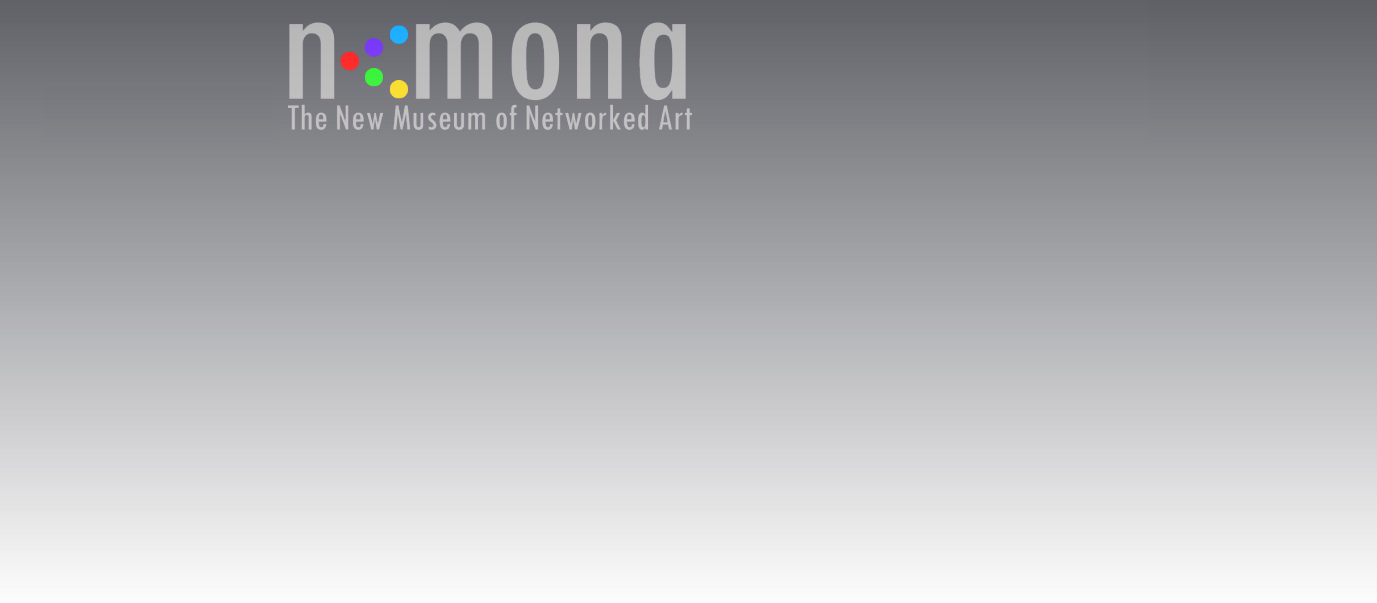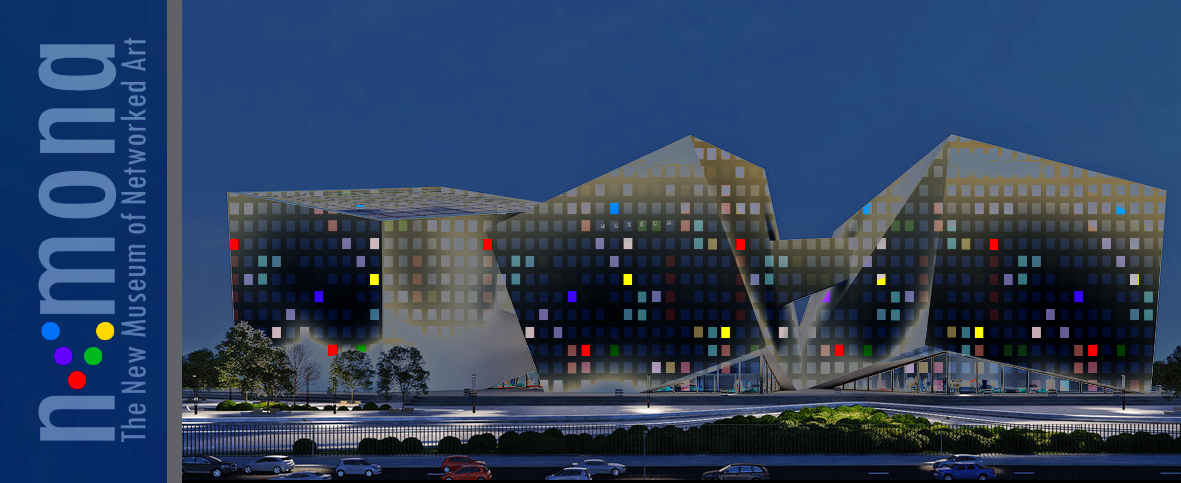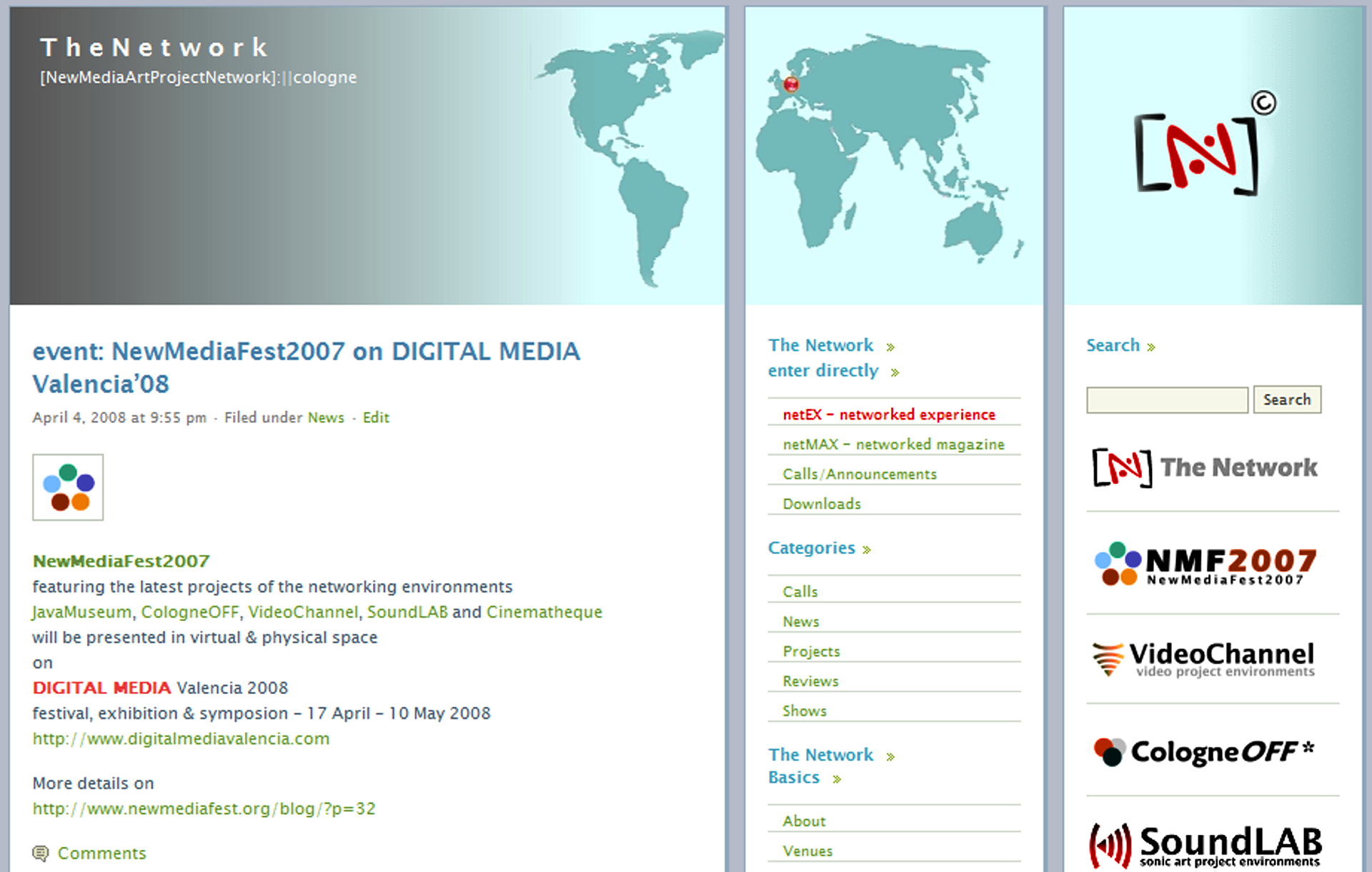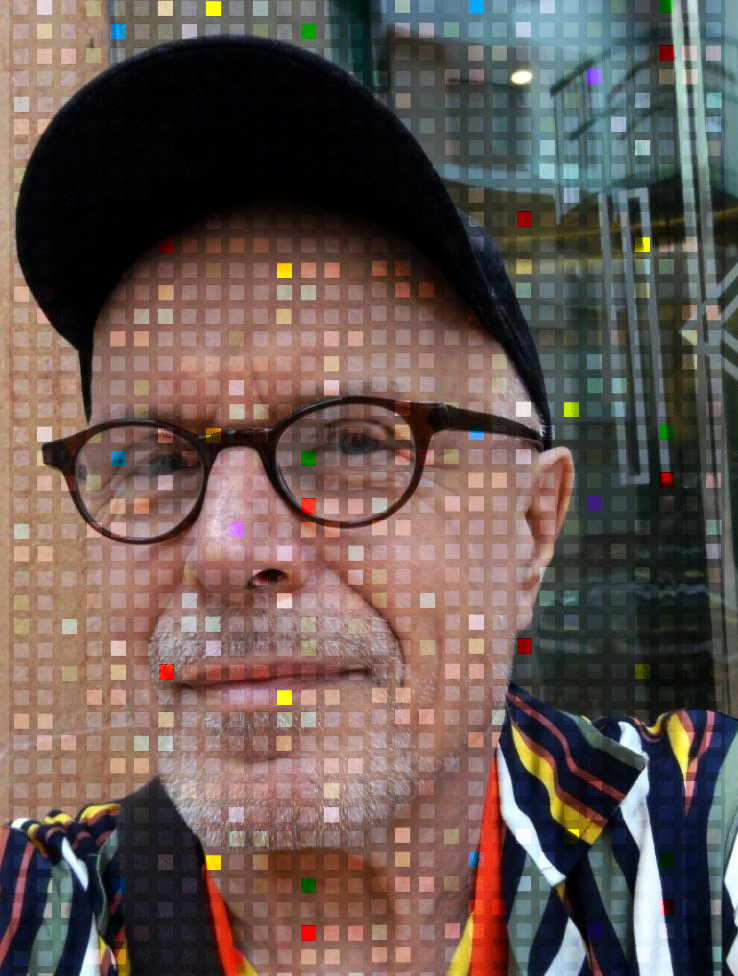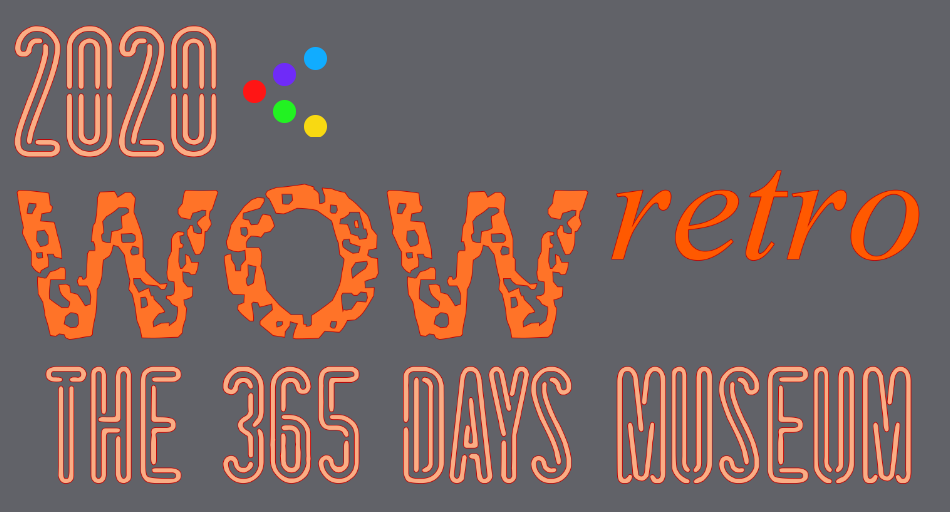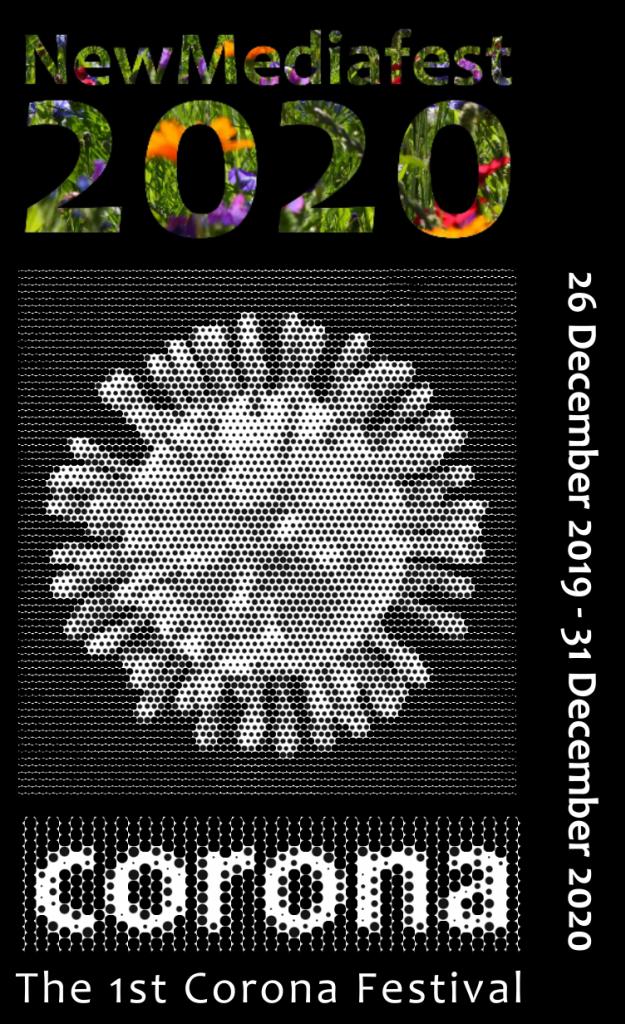The New Museum of Networked Art
aka the NewMediaArtProjectNetwork://cologne,
also named “Le Musee di-visioniste
is the manifestation or visualization of an Utopia, the Utopia of Agricola de Cologne. Thus the basis is representing an artistic, respectively philosophical concept, which cannot compared with anything else.
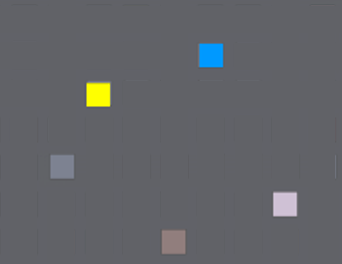 Founded/initiated as – NewMediaArtProjectNetwork://cologne (abbreviated as The Network) in 2000, in the beginning of the museum was standing this new media initiative as an dynamic art project, which was represented in different manifestations in an exchange between virtual and physical space already in 2001 at prestigious digital art contexts like – FILE – Electronic Language Festival Sao Paulo, Ars Electronica Linz (Austria), Art on The Net/Machita Museum of Grafic Arts (Japan), Boston CyberArt Festival and Videoformes- Digital Arts Festival Clermont-Ferrand/France, preparing the basis for the later museum through initiating and realising a wide range of globally networked art projects, representing the networked initiative operating from Cologne – 2002 also at Ars Electronica, FILE – Electronic Art Festival, Museum of Contemporary Art Chicago (USA) and Videoformes Clermont-Ferrand (F), in 2003 NewMediaArtProjectNetwork://Cologne, respectively its creator Wilfried Agricola de Cologne, became co-curator in INTERACTIVA – New Media Art Biennale Merida/Mexico & Violens Festival Tabor (CZ) which was a starting point of a new type of networking, besides its representations at FILE – Electronic Language Festival Sao Paulo, Videoformes – 18th Video and Digital Media Festival Clermont-Ferrand (France) and Media Arts Festival, Tokyo Metropolitan Museum of Photography.
Founded/initiated as – NewMediaArtProjectNetwork://cologne (abbreviated as The Network) in 2000, in the beginning of the museum was standing this new media initiative as an dynamic art project, which was represented in different manifestations in an exchange between virtual and physical space already in 2001 at prestigious digital art contexts like – FILE – Electronic Language Festival Sao Paulo, Ars Electronica Linz (Austria), Art on The Net/Machita Museum of Grafic Arts (Japan), Boston CyberArt Festival and Videoformes- Digital Arts Festival Clermont-Ferrand/France, preparing the basis for the later museum through initiating and realising a wide range of globally networked art projects, representing the networked initiative operating from Cologne – 2002 also at Ars Electronica, FILE – Electronic Art Festival, Museum of Contemporary Art Chicago (USA) and Videoformes Clermont-Ferrand (F), in 2003 NewMediaArtProjectNetwork://Cologne, respectively its creator Wilfried Agricola de Cologne, became co-curator in INTERACTIVA – New Media Art Biennale Merida/Mexico & Violens Festival Tabor (CZ) which was a starting point of a new type of networking, besides its representations at FILE – Electronic Language Festival Sao Paulo, Videoformes – 18th Video and Digital Media Festival Clermont-Ferrand (France) and Media Arts Festival, Tokyo Metropolitan Museum of Photography.
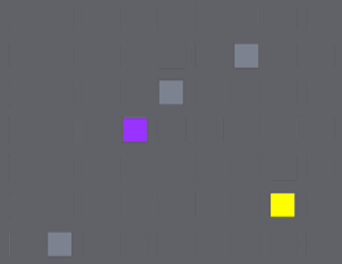 While during the 1st years, the media focus was on Internet based art (also called “netart”), interactive art works executed in a variety of technology, manifested in projects like “A Virtual Memorial, Violence Online Festival or The RRF Project, but also JavaMuseum, as the 1st virtual museum for virtual art and the platform for Internet based art in the framework of the “Network,
While during the 1st years, the media focus was on Internet based art (also called “netart”), interactive art works executed in a variety of technology, manifested in projects like “A Virtual Memorial, Violence Online Festival or The RRF Project, but also JavaMuseum, as the 1st virtual museum for virtual art and the platform for Internet based art in the framework of the “Network,
in 2004 the “Network” started following a new direction (concept)- moving images / videoart via its representations at Biennale of Electronic Art Perth/Australia and National Museum of Contemporary Art Bucharest/Romania, while Ars Electronica Linz (A), 19th Video and Digital Media Art Festival Clermont-Ferrand (F) and FILE – Electronic Language Festival Sao Paulo were still venues for the previous concepts. The new moving images concept was represented 2005 at Biennale for New Media and Video Santiago/Chile, Images Festival Toronto/CA, but also FILE – Electronic Language Festival Sao Paulo and Videoformes Clermont-Ferrand (F) & Carnegie Mellon University Pittsburgh/USA were following.
2005 was also the year, when the new “moving images” concept was manifesting itself in a new networked construction – CologneOFF – Cologne Online Festival – later renamed to Cologne International Videoart Festival – the starting point for a new quality and quantity of networked projects forming the basis of the huge “moving images ” collection at The New Museum of Networked Art.
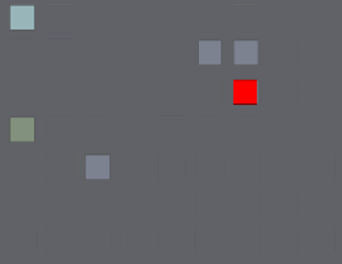 It was an evolutionary development of media and concepts for a diversity of new types of art creations – curating and collecting (forming art works through curating and collecting) – also encouraged and motivated by the fast development of technology during the years 2004-2010.
It was an evolutionary development of media and concepts for a diversity of new types of art creations – curating and collecting (forming art works through curating and collecting) – also encouraged and motivated by the fast development of technology during the years 2004-2010.
In 2007 and 2010, “The Network” was realising a new type of globally networked festival – NewMediaFest 2007 and NewMediafest 2010, including not only a large number of artists, but also curators and physical venues – the globe as a place for all – at least at that time as an artistic and curatorial concept. NewMediaFest 2010 was also a kind of saying farewell to “netart” as a media focus and point to the next following years dedicated to networking in the field of art and moving images.
Already in 2010, the “NewMediaArtProjectNetwork://cologne” was conceptionally and formally transformed into “The New Museum of Networked Art”, because the festival retrospectives on the past 10 years – NewMediaFest 2010 – allowed such perspectives to the future.
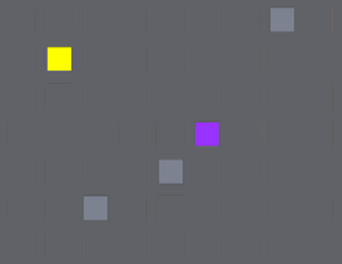 Only one year later, the next global networking project during one entire year – “CologneOFF 2011 – videoart in a global context” war outlining the new concept for the next following 10 years curating (curating art, artists, curators and venues) and collecting art and moving images, in order to receive at the end of these developments the real “New Museum of Networked Art” as an ongoing, experimental enterprise in contemporary art. Always “new” and renewing itself through itself!
Only one year later, the next global networking project during one entire year – “CologneOFF 2011 – videoart in a global context” war outlining the new concept for the next following 10 years curating (curating art, artists, curators and venues) and collecting art and moving images, in order to receive at the end of these developments the real “New Museum of Networked Art” as an ongoing, experimental enterprise in contemporary art. Always “new” and renewing itself through itself!
The years between 2010 and 2020 were incredible in many concerns, because The New Museum of Networked Art was rapidly growing through global networking – a certain kind of positive globalization, on the other hand, after 2016 a kind of counter-movement started to disturb this idea/concept by rethinking a lot of ancient values – causing intolerance, exclusion, nationalism, neo-fascism and – global conflicts instead of avoiding them.
NewMediaFest 2020 was taking the retrospective view on the past 20 years since the initiation of Agricola de Cologne’s networked activities by creating a new museum within The New Museum of Networked Art – “WOW retro – The 365 Days Museum – All in One” – networking everything with everything.
What or Who is Agricola de Cologne and what is his Utopia?
Agricola de Cologne is representing the brand for the virtual artist, curator and designer of culture of the same name. Initiated, founded and established on 1 January 2000, Agricola de Cologne stands for a new millenium. This is also good for a new millenium in art. Rooted on the new technologies developing rapidly after the foundation of this “brand” in art, Agricola de Cologne is practicing a new field of artistic creations which have not been possible before: eg. global and local networking.
This “networking” is not only related to a wide range of artistic projects depending on each other using the Internet and releated communicating technologies, but also the result of its creating and establishing networks on different levels via curating, a new and very personal kind of artistic expression practiced by Agricola de Cologne during the past 15 years. networking as artworking.
The Utopia in establishing “le Musee di-visioniste” as such a networked art project was, that when the artist initiated the idea of such a museum, the contents for building a museum collection did not exist, yet. It was even like that, that nobody, and at least the artist himself, knew, what would become out of “Agricola de Cologne”, at all, and how the work of the virtual instance would actually look like. Any definition used these days is based on a retrospective view, this is good for the virtual artist, curator, designer of culture, programmer, festival director and all those other functions normally whole institutional teams are working on. But Agricola de Cologne was and is combining all in one person. Agricola de Cologne is representing a network of itsown – he is the network.
It was also not like that, that the “museum” was constructed intentionally in a usual process of building the home for existing and yet to establish collections, but the idea of the “museum” was accompanying the artist while he was establishing himself as such, and only by doing, the utopean idea of the unknown museum took slowly shape.
Born on 1 January 2000 and starting from point zero, materially and immaterially, it was his chance, after the artist had lost his memory completely temporarily caused by a coma, which is described in detail at another place, to write his own history and memory completely free from ancient conventions, and re-collect memory of a lost (firstly unknown and later re-known) Past simultaneously, and establish and re-establish identity. Thus, there are good reasons, why “memory & identity” became the artist’s “credo” in anything he was doing since 2000, and a basic condition for the museum project.
Thus, the “Utopean” idea was not based on an intellectual concept prepared in advance, but the unknown to come, and this is good even nowadays after many aspects of the Unknown, which was only unknown at the time when it was unknown, got a concret shape during the past 15 years, so that only today actually, it is allowed to speak of a real museum, “le Musee di-visioniste” is representing according to its progressing concept.
The idea of the divisionsm was not unkown to the artist, this became evident via the shadows of the Past. In his former artistic life before 2000, he had become aware of the analytical character of his personality. In an artistic sense, this manifested itself in a kind of creating conventional paintings by using traditional art media in most unconventional ways. In project phases when he was using “watercolor” 1980-1984 and “pastel” 1984-1988, he executed paintings according to the divisionsitic principle of the Pointillist artists of the 19th century, whereby the actual painting was not the individual art work which was consisting, as such, of countless color dots which only formed the unity of the image in the eye of the spectator, but it was already at that time a virtual painting consisting of all art works executed during a certain working phase. These individual works executed during the project phase were actually the color dots the virtual picture was consisting of.
The same analytical character was manifesting itself in his memorial project “A Living Memorial”, realised between 1993 and 1998 and its physical manifestations 1995-1998, when he designed a mobile memorial to be presented at the same time at different places for a temporarily limited period of time.
So, the idea of “le Musee di-visioniste” to form a virtual sculpture consisting of a wide range of layers of perception does actually not represent anything new because it was always present and the condition for being creative as an artist/curator, but rather a kind visuaization of the genetic condition to deal with art in a completely new way. The artist became only aware of these characteristics after he had lost his entire memory and he started to establish a new person and re-establish its shadows of the Past after 2000, a process which is lasting until these days.
The project of “le Musee di-visioniste” can be considered as a kind of “life” project, a manifestation of the genetic tendency to face always the encompassing whole, instead of parts of it. It is the nature of that kind of perception, that the dimension of the all encompassing whole is never known, but only parts of it. The individual art works included in this encompassing whole, get their real meaning in the context of the whole, one might also speak of a “Gesamtkunstwerk”, whereby the artist himself is not representing the “Gesamtkunstwerk” as such, but he is just a part of the whole, even he is the main condition for the existing of the whole which he is a part of it. So, The “Gesamtkunstwerk” will become only visible after the artist finished his life conceptually or physically.
The project “le Musee di-visioniste” is not based on a Utopean idea, but it is an Utopia itself, as well as “Agricola de Cologne” is representing “an”, respectively “the” “UTOPIA”.
WOWretro – retrospective 2020
WOW Jubilee 2020
During 2019 something new was about to develop. The working phase since 2000 came to an end, and at the end of this year NewMediaFest2020 started – the experiment of an retrospective during the Corona crisis. It was Agricola de Cologne’s idea to celebrate the past 20 years together honoring all artists, curators, virtual and physical instances, by packing everything which was happening during the past 20 years into one year – via 12 monthly festival editions and The 365 Days Diary – featuring each day another context and venue.
In this way during 2020 the new museum was taking shape which cannot compared with anything else. The museum department, which were containing only data before and The New Museum of Networked Art was “just” existing as a structure linking the diverse conceptual bodies with one another. But now NewMediaFest2020 was visualizing the networking idea via documents and artworks and a museum in the classical sense of the word was rising during the year 2020.
On 31 December 2020, NewMediaFest2020 closed the doors, and then the festival was transformed into The 365 Days Museum combining everything which was divided into countless pieces to one work.
It is representing that divisionistic “painting” which can now be experienced in one single application consisting of countless “color dots”.
